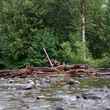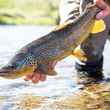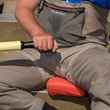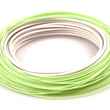Earlier this year, we published a blog post titled Classic Flies are Classic for a Reason. The gist of that post was that the patterns that have stood the test of time have done so for a reason and given such should likely have a place in your fly box. Soft hackle flies are one of those classics. I have met many fly fishermen for which they are an absolute staple, employed on the stream as often as a pheasant tail nymph or parachute adams. But, I've met many more that don't fish them at all or only rarely do so, considering them sort of an oddity.
The truth is, however, that soft hackles are one of the most effective styles of flies ever created, and one that should have a home in virtually every angler's arsenal. Soft hackle fly patterns date back over half a millennia. Think about that. What are the chances that a pattern that has persisted for over 500 years doesn't deserve some significant real estate in your fly box?
In their simplest form, soft hackle flies are little more than thread or herl wrapped around the hook shank with a sparsely palmered hackle at the front. There are more elaborate versions that extend this basic design concept, but even the most feature-packed soft hackle flies are relatively feature-less.





























